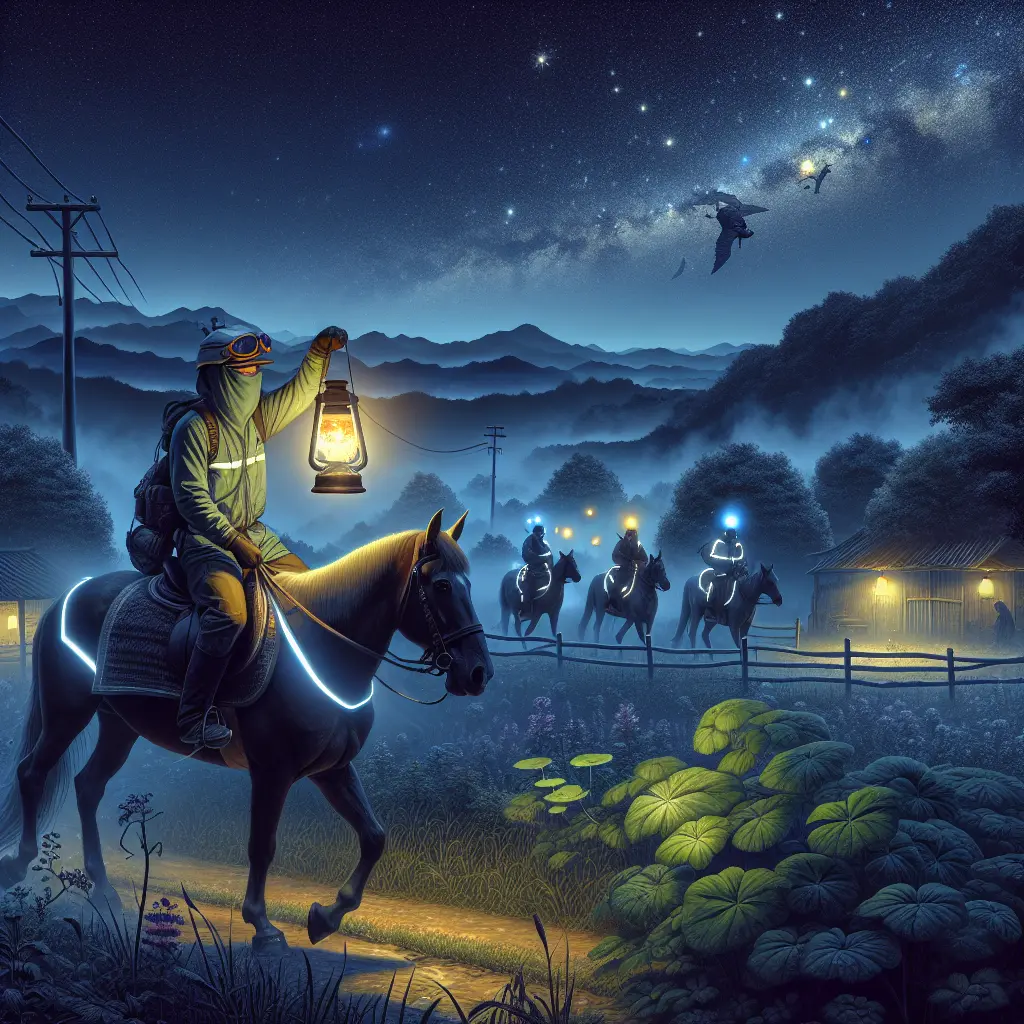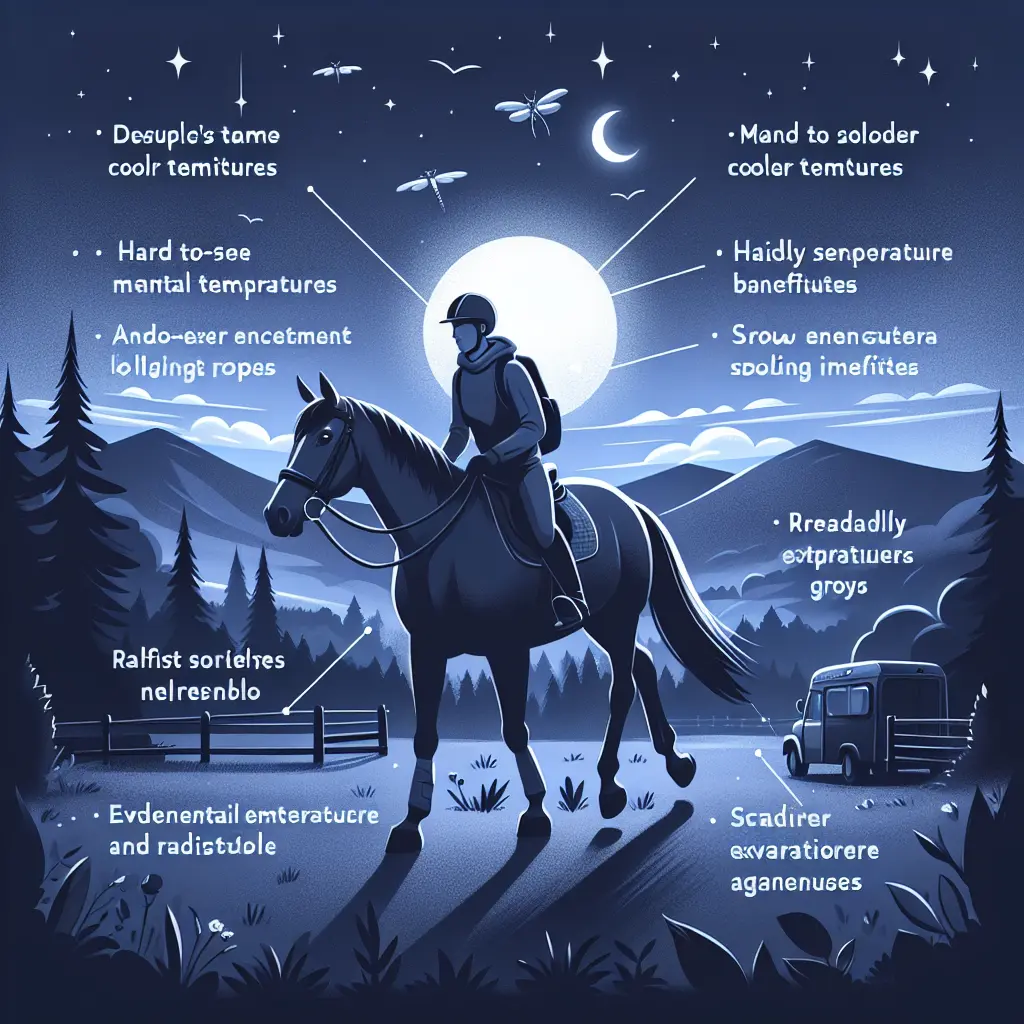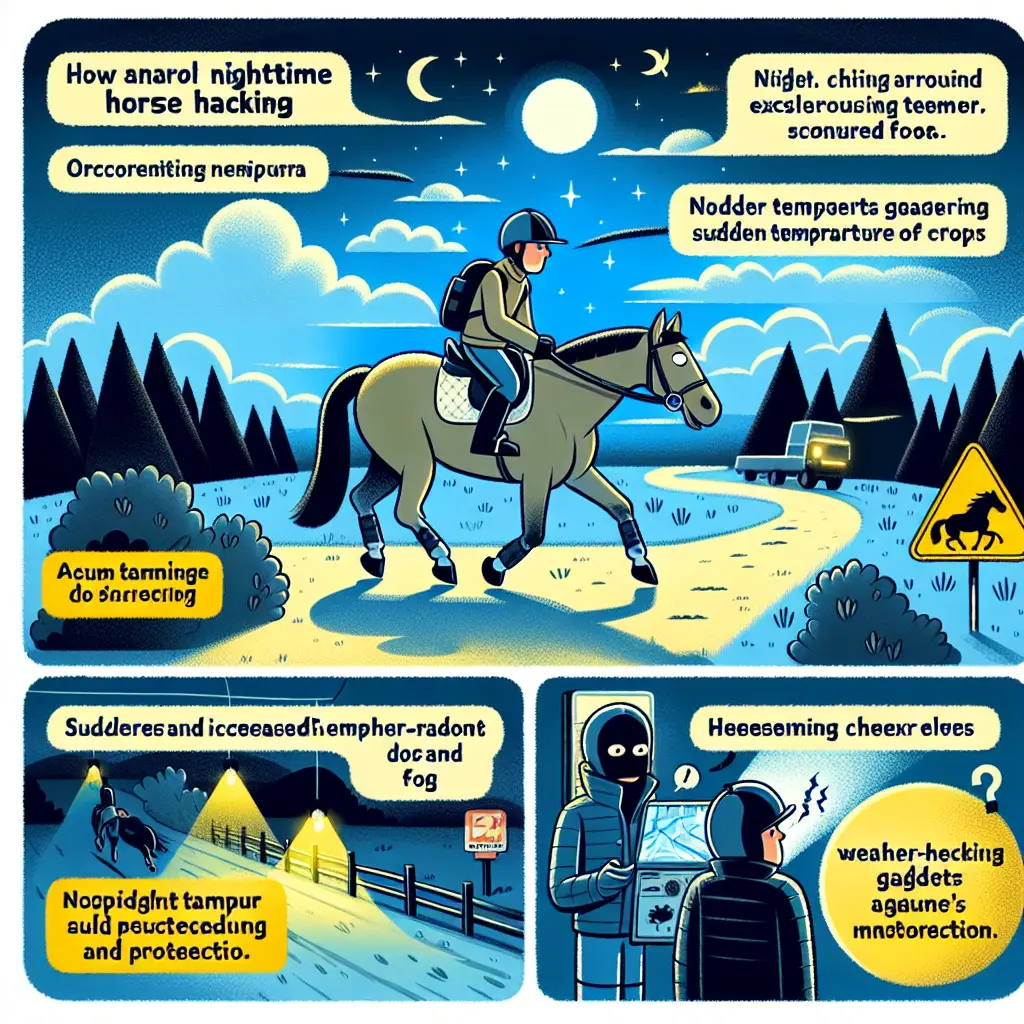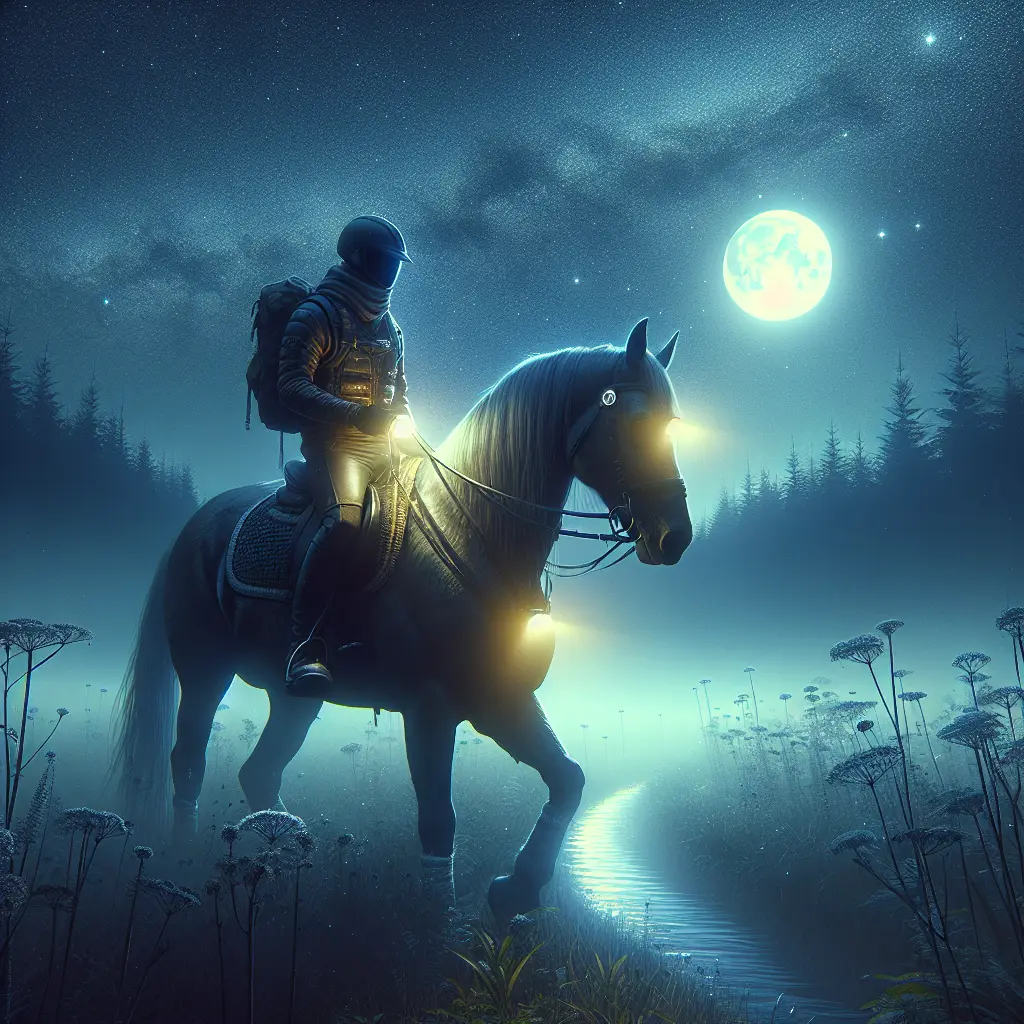Riding in Darkness: Exploring the Benefits and Risks of Nighttime Horse Hacking
Welcome to the world of Just Horse Riders, a leading expert in horse riding apparel and equestrian supplements. Here, we delve into the intriguing realm of nighttime horse hacking, offering insights into its benefits and risks to help you make an informed decision about whether it's right for you and your equine companion.
The Unique Appeal and Benefits of Nighttime Horse Hacking

1. Cooler Temperatures and Comfort for Horse and Rider
During the sweltering summer months, temperatures soar, making daytime rides uncomfortable for both horse and rider. Riding at night allows you to bask in cooler temperatures, reducing the risk of heat stress and dehydration for your horse. Night turnout is particularly advantageous in hot, humid climates, facilitating a more comfortable environment for the animals [source].
2. Mental and Physical Health Benefits
Horseback riding has been lauded for its mental health benefits, as it reduces stress and promotes relaxation. Nighttime riding amplifies these benefits by providing a serene and meditative atmosphere, free from daytime distractions. Many riders report improved sleep and better mental clarity following a nighttime hack [source].
3. Maximizing Turnout and Riding Time
For those balancing busy schedules, nighttime rides can be the most convenient way to connect with their horses. Night turnout allows horses to spend more time outdoors, enhancing their physical health through improved bone density and joint flexibility. Horses instinctively prefer cooler periods, making them more comfortable at night [source].
4. Reduced Exposure to Insects
Pesky insects, such as flies and mosquitoes, are significantly less active at night, leading to a more pleasant riding experience. This aspect enhances the overall comfort for both horse and rider [source].

The Risks and Challenges of Riding at Night
1. Increased Risk of Injury
Horseback riding is inherently risky, with high injury rates surpassing those of sports like motorcycle riding and skiing. The low visibility at night exacerbates these risks, increasing the likelihood of accidents due to unseen obstacles or uneven terrain. Injuries such as spinal injuries, fractures, and concussions are documented hazards [source].
2. Visibility and Navigation Difficulties
Darkness poses significant challenges in terms of visibility, making it difficult to see trails or potential hazards. It's crucial to invest in quality lighting gear, like reflective clothing and headlamps, to enhance visibility for both horse and rider. Despite these precautions, limited sight lines and shadows continue to pose risks.
3. Animal Behavior and Stress
Horses, being prey animals, can be easily spooked by sudden noises or stimuli in the dark. Nervousness is often contagious, potentially leading to unsafe situations. Additionally, horses require darkness to sleep properly; bright lights in stables at night can cause sleep deprivation and stress [source].
4. Weather and Environmental Hazards
While nighttime temperatures can be beneficial, sudden drops in temperature may affect horse health, particularly if they aren't properly blanketed. Riders should also watch out for dew, frost, or fog that can make trails slippery.

Best Practices for Safe Nighttime Horse Hacking
- Plan Familiar Routes: Choose well-known trails or paths free from unexpected obstacles.
- Equip Proper Lighting: Use headlamps, reflective gear, and illuminated tack.
- Ride with a Buddy: Whenever possible, ride with a companion or inform someone of your route and ETA.
- Check Weather Conditions: Avoid riding in fog, heavy dew, or icy conditions that impair footing.
- Use Appropriate Protective Gear: Helmets, body protectors, and boots are essential.
- Monitor Your Horse’s Condition: Ensure they are accustomed to the nighttime environment and check for signs of stress.
- Consider Stabling Practices: Minimize artificial lighting to support their sleep cycle [source].

Conclusion
Nighttime horse hacking offers a refreshing escape into a world of cooler temperatures, tranquil environments, and extended riding opportunities. By prioritizing safety and adopting best practices, riders can incorporate nighttime rides into their routine, fostering a deeper connection with their horse while safeguarding their wellbeing. As with any riding activity, it's important to prioritize safety, know your horse's needs, and adapt to conditions.
For further reading on horse turnout schedules and health considerations, explore Mad Barn's comprehensive guide [here]. To understand the injury risks and safety protocols in equestrian sports, the CDC offers valuable insights and recommendations.
Embrace the magic of riding under the stars and enrich your equestrian experience with a little help from Just Horse Riders, your trusted partner in horse riding apparel and supplements.

